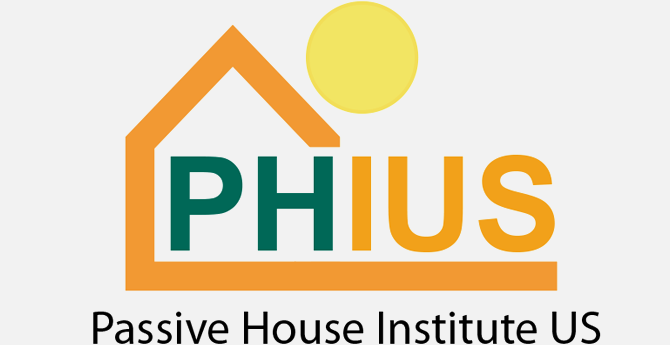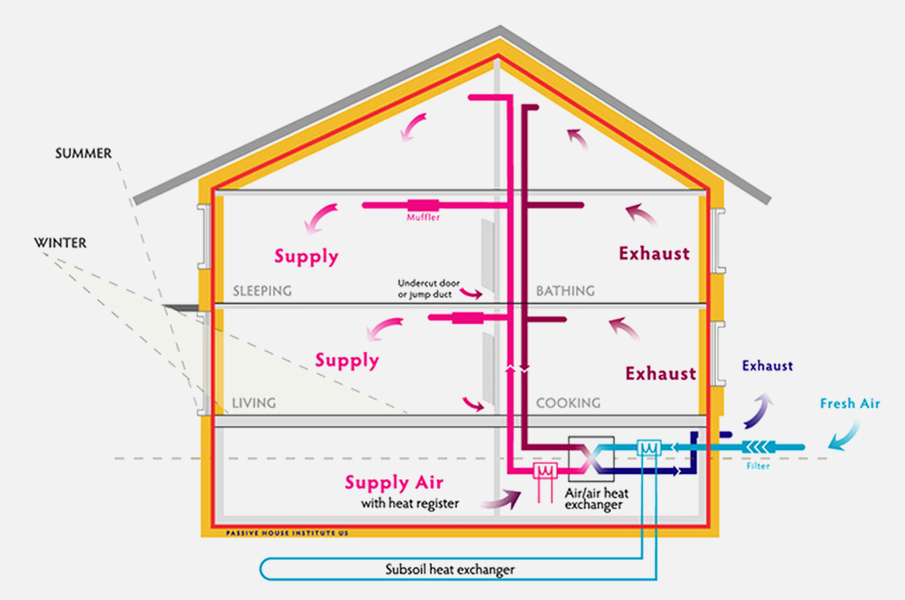
Passive House Certification

What is Passive House?
Passive House refers to a general building built using state-of-the-art construction techniques to maintain a comfortable indoor temperature without artificial energy supply through heating equipment.
The word “house” is misunderstood as a building technique that applies only to homes, but it is not. Starting from a detached house, it is applicable to all types on architecture, from apartments, offices commercial facilities to high-rise buildings.
What are the advantages of Passive House?
Insulation and ventilation, the core technology of Passive House, create the best indoor experience.
1. Maintain a comfortable room temperature
Passive houses are kept at about 20°C in midwinter and about 26°C in midsummer, uniformly inside the building.
2. Condensation, zero mold
Condensation is the dew formation of indoor steam on a wall cooled by external temperature. Resolutions and their resulting molds cause serious harm not only to the user’s health but also to the building itself. The only solution is to increase the cabin temperature, which uses thick insulation to keep the winter cabin temperature above 20°C, thus cutting off the condensation.
3. Fresh air
There are countless substances that pollute indoor air such as carbon dioxide, fine dust, radon, floating bacteria, benzene, toluene, and formaldehyde that threaten our health. To maintain indoor air quality, fresh air must be brought in while continuously discharging pollutants. The Passive House heat recovery ventilation system is basically a ventilation system, allowing you to enjoy fresh air 24 hours a day.

The greatest advantage of passive house, reduced heating and cooling costs
The cost of building a Passive House is about 500,000 won more per square meter than a regular house. However, heating and cooling costs can be reduced to one-tenth of a percent of existing homes. In terms of oil, the average annual use of cooling and heating energy in our homes is 16 liters per square meter, and the passive house is less than or equal to 1.5 liters. It saves more than 80 percent of its energy, which means it can reduce carbon emissions.
How is Passive House constructed?
Passive House, simply described as a building that uses the principle of a thermos. To preserve the warmth inside without the use of energy, it is imperative to stop the heat from moving, right? A thermos bottle maximizes the insulation of the bottle itself and the sealing power of the lid, preserving the warmth inside. The same is true of Passive House. The goal of Passive House is to maintain a mid-winter indoor temperature of about 20°C and a mid-summer indoor temperature of about 26°C.
To do this, use the following technologies:
1. Use thick insulation
Insulation is a key factor in reducing heating energy use, but the role of blocking outside heat in summer is also negligible. Passive houses build insulation at least 30cm thick, three times thicker than insulation used in a typical home.
2. High insulation windows (typically tri-layer glass) and door application
Three insulated windows and special doors are installed to reduce energy loss by blocking circulation of the exterior and interior air.
3. Three insulated windows and special doors are installed to reduce energy loss by blocking circulation of the exterior and interior air.
Passive homes are required to install ‘heat recovery ventilation’ to capture the heat energy lost in ventilation. ‘Heat recovery ventilation’ is a device that minimizes energy loss due to ventilation by intersecting the warm air and fresh outside air that is discharged from ventilation, minimizing the temperature difference.
4. Active use of solar energy
Even with extreme reductions in energy losses, buildings need energy basically. Passive houses are designed to provide the building with energy supply and demand through self-generation using solar heat.
Passive house design from an expert!
A comfortable life is a must, saving heating and cooling, saving the earth. Passive House is our future. Passive House, which requires the use of various cutting-edge techniques. You need to leave it up to experts at the design stage to get a good start.
CEO Park Ji-hyun of atlasen™, has acquired the license issued by the Passive House Association of America, CPHC (Certified Passive House Consultant, CPHC®).
Join us for a professional and structured consult on Passive House design and overall areas.

